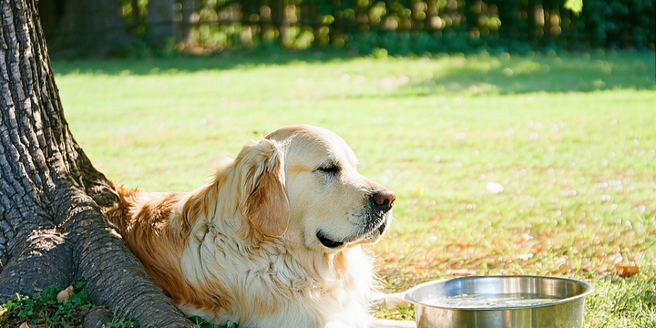
Why Hydration is Crucial for Dogs in Hot Weather
When temperatures soar, dogs are at a high risk of dehydration which can lead to serious health issues. Proper hydration is vital because it regulates body temperature, supports digestion, and aids in nutrient absorption. Without enough water, dogs can suffer from heatstroke, a potentially life-threatening condition. Moreover, dehydration can cause kidney failure and heart complications. Ensuring that your dog has constant access to fresh water and is encouraged to drink regularly during the hot weather can prevent these serious health risks. Always monitor water intake during walks or outdoor play, as dogs might not understand when they need to hydrate. By prioritizing their hydration, pet owners can ensure their dogs remain healthy and active even during the hottest days.
Signs of Dehydration in Your Dog
Recognizing the signs of dehydration in dogs is crucial for their health and well-being. The first indicators can include excessive panting and drooling. You might also observe dry or sticky gums like the consistency of marshmallows and lethargy. A simple test is to gently lift the loose skin at the back of their neck; if it doesn’t snap back quickly, your dog could be dehydrated. Other symptoms are sunken eyes and a loss of appetite. More severe cases can involve vomiting or diarrhea. It’s essential to address these signs immediately, providing fresh water or consulting with a veterinarian if symptoms persist. By staying alert to these signs, dog owners can take swift action to prevent health complications associated with dehydration.
Effective Ways to Keep Your Dog Hydrated
Keeping your dog hydrated requires a few simple but effective strategies. First, always provide access to fresh and clean water, replacing it as needed throughout the day. During outings, carry portable water and a collapsible bowl for easy hydration. Encourage your dog to drink by adding a splash of broth to their water or offering ice cubes as a treat. Additionally, wet dog food can increase fluid intake. On particularly hot days, avoid outdoor activities during peak heat and opt for early morning or late evening walks. Some owners find success in using dog-friendly hydration packs that encourage sipping on the go. By employing these techniques, pet owners can help ensure their dogs remain adequately hydrated, healthy, and happy.
Choosing the Right Water Sources for Dogs
When selecting water sources for dogs, pet owners must prioritize cleanliness and safety. Ideally, always provide tap or filtered water to reduce exposure to potential contaminants found in stagnant or unknown sources. While it might be tempting to let your dog drink from a lake or pond, it’s risky due to the potential presence of harmful bacteria or algae. Even natural sources should be monitored for pollutants. At home, provide fresh and cool water in a bowl every day and ensure it is free from debris. When outdoors or camping, consider carrying bottled water or using portable filtration systems. Safety in water sources prevents health issues, ensuring your dog enjoys each sip safely.
Tips for Monitoring Your Dog’s Water Intake
Keeping track of your dog’s water intake is essential to ensure they are drinking enough but not too much. Typically, a dog needs about one ounce of water per pound of body weight daily. You can measure the amount of water you provide and check how much is left at the end of the day. Be attentive to the increase in drinking – excessive thirst can be a sign of underlying health problems. Pay attention to any changes in their drinking patterns, especially during vigorous activities or hot weather. Also, use water fountains designed for dogs; they can encourage drinking due to the movement and sound of flowing water. By monitoring intake, you can promptly address any concerns and maintain their health.
